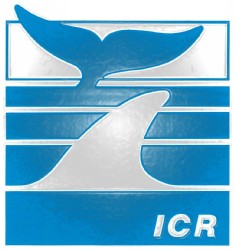
Whaling is the hunting of whales for their usable products such as meat and blubber, which can be turned into a type of oil that was important in the Industrial Revolution. Whaling was practiced as an organized industry as early as 875 AD. By the 16th century, it had become the principal industry in the Basque coastal regions of Spain and France. The whaling industry spread throughout the world and became very profitable in terms of trade and resources. Some regions of the world's oceans, along the animals' migration routes, had a particularly dense whale population and became targets for large concentrations of whaling ships, and the industry continued to grow well into the 20th century. The depletion of some whale species to near extinction led to the banning of whaling in many countries by 1969 and to an international cessation of whaling as an industry in the late 1980s.

The Institute of Cetacean Research is a research organization specializing in the "biological and social sciences related to whales".

Ebisu, also transliterated Webisu or called Hiruko (蛭子) or Kotoshiro-nushi-no-kami (事代主神), is the Japanese god of fishermen and luck. He is one of the Seven Gods of Fortune, and the only one of the seven to originate purely from Japan without any Buddhist or Taoist influence.

Japanese whaling, in terms of active hunting of whales, is estimated by the Japan Whaling Association to have begun around the 12th century. However, Japanese whaling on an industrial scale began around the 1890s when Japan started to participate in the modern whaling industry, at that time an industry in which many countries participated.

A whaler or whaling ship is a specialized vessel, designed or adapted for whaling: the catching or processing of whales.

Flensing is the removing of the blubber or outer integument of whales, separating it from the animal's meat. Processing the blubber into whale oil was the key step that transformed a whale carcass into a stable, transportable commodity. It was an important part of the history of whaling. The whaling that still continues in the 21st century is both industrial and aboriginal. In aboriginal whaling the blubber is rarely rendered into oil, although it may be eaten as muktuk.
Whaling in Norway involves hunting of minke whales for use as animal and human food in Norway and for export to Japan. Whale hunting has been a part of Norwegian coastal culture for centuries, and commercial operations targeting the minke whale have occurred since the early 20th century. Some still continue the practice in the modern day, within annual quotas.

Mercator Cooper was a ship's captain who is credited with the first formal American visit near Edo, Japan and the first formal landing on the mainland East Antarctica.
The Southern Ocean Whale Sanctuary is an area of 50 million square kilometres surrounding the continent of Antarctica where the International Whaling Commission (IWC) has banned all types of commercial whaling. To date, the IWC has designated two such sanctuaries, the other being the Indian Ocean Whale Sanctuary.

Commercial whaling in New Zealand waters began late in the 18th century and continued until 1965. It was a major economic activity for Europeans in New Zealand in the first four decades of the 19th century. Nineteenth-century whaling was based on hunting the southern right whale and the sperm whale and 20th-century whaling concentrated on the humpback whale.

Whale conservation refers to the conservation of whales.
Marius Berthus Jansen was an American academic, historian, and Emeritus Professor of Japanese History at Princeton University.

A drift whale is a cetacean mammal that has died at sea and floated into shore. This is in contrast to a beached or stranded whale, which reaches land alive and may die there or regain safety in the ocean. Most cetaceans that die, from natural causes or predators, do not wind up on land; most die far offshore and sink deep to become novel ecological zones known as whale falls. Some species that wash ashore are scientifically dolphins, i.e. members of the family Delphinidae, but for ease of use, this article treats them all as "drift whales". For example, one species notorious for mass strandings is the pilot whale, also known as "blackfish", which is taxonomically a dolphin.
Annick Mito Horiuchi is a French historian of mathematics and historian of science. She is a professor at Paris Diderot University, where she is associated with the Centre de recherche sur les civilisations de l'Asie orientale (CRCAO).
Kanokogi Kazunobu 鹿子木員信 was a Japanese professor, philosopher, mountaineer, author and war criminal.

Floating Coast: An Environmental History of the Bering Strait is a 2019 book by Brown University historian Bathsheba Demuth, published by W. W. Norton & Company. The book examines environmental and social change in the Beringia region surrounding the Bering Strait from the mid-nineteenth to the late-twentieth centuries, focusing on the pursuits of American and Russian interests and their interactions with local Chukchi, Iñupiat, and Yupik peoples. Those interests were largely focused on fauna such as bowhead whales, walruses, and reindeer, along with minerals, especially gold.
Jogaku zasshi was a women's magazine published in Tokyo, Japan, during the Meiji era between July 1885 and February 1904. It is the first women's magazine in the country. In addition, it was the most significant publication in its category.

Several Eastern folk religions practice in the worship of whales. This practice is common in Vietnamese folk religion, where it is known as Cá Ông. In Vietnamese religion, whales are believed to be guardian angels that protect fishermen. Beached whales are buried and given funerals, and festivals are held in honor of whales.
Joan R. Piggott is an American historian specializing in East Asian studies.
Thomas Robert Hamilton Havens is an American Japanologist.












